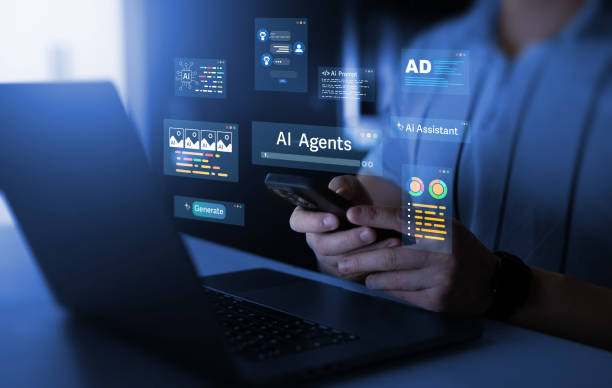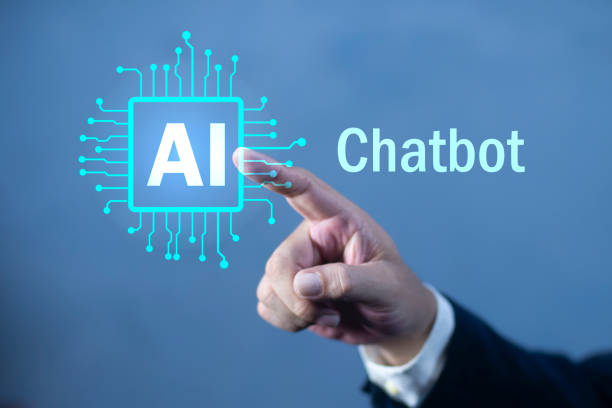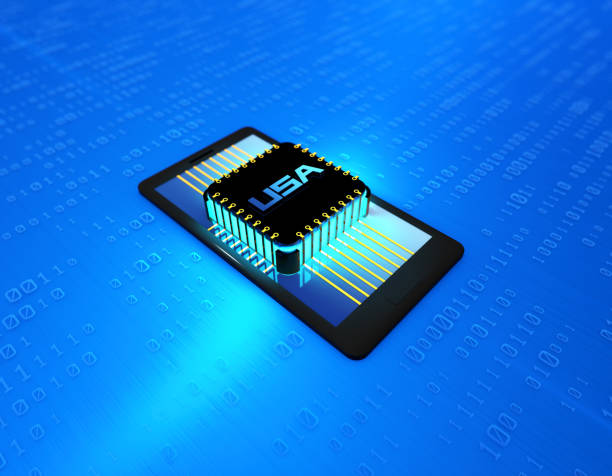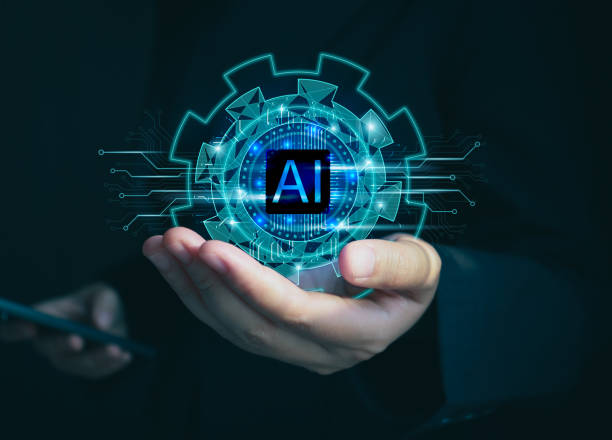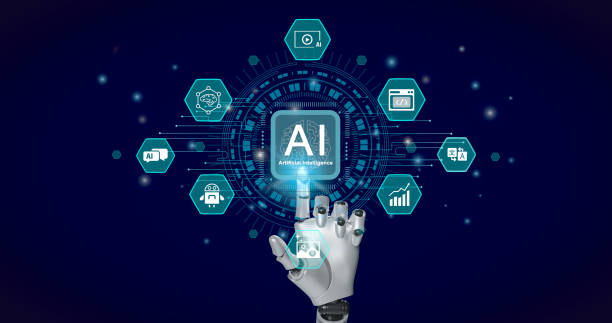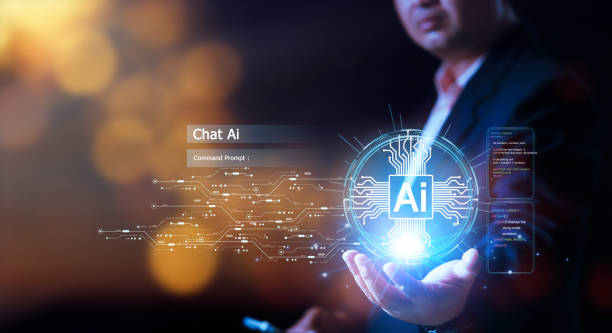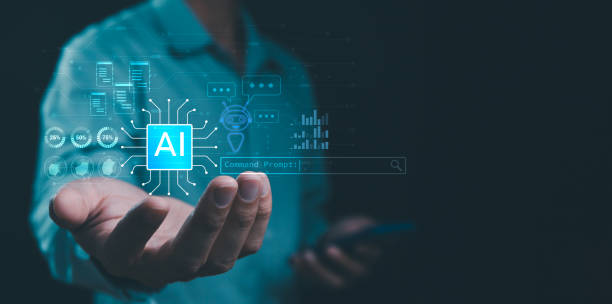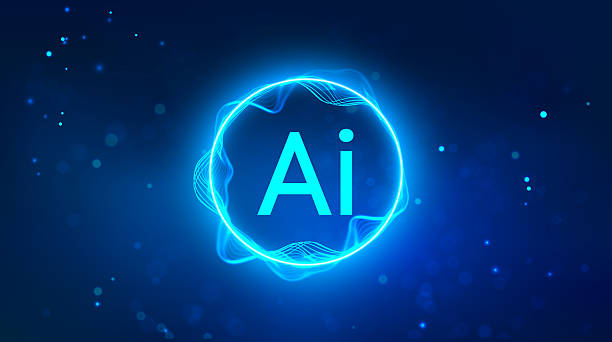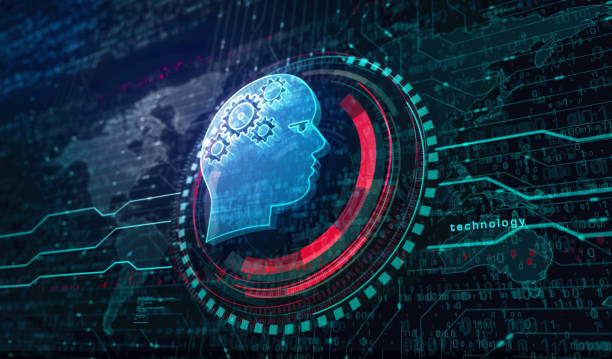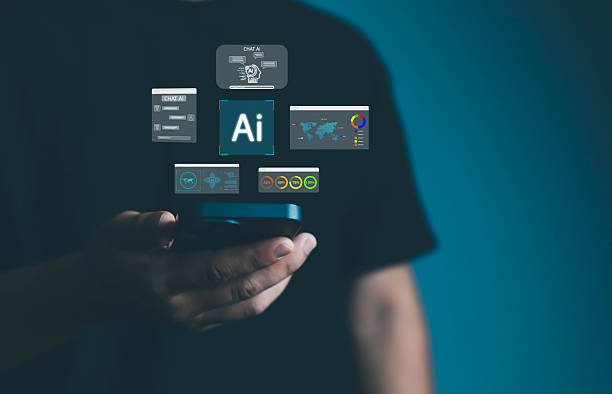What is an AI Robot and How Does It Work?
In today’s world, the term #AI Robot is increasingly heard.
But what exactly is an AI Robot? In short, an AI Robot is a physical or virtual machine that, using artificial intelligence (AI) algorithms, is capable of performing tasks that typically require human intelligence.
These tasks can include learning, reasoning, problem-solving, understanding natural language, and pattern recognition.
AI Robots can make decisions and act independently by receiving data through sensors and processing it using AI algorithms.
The main difference between ordinary robots and AI robots is that ordinary robots usually operate based on pre-programmed instructions and do not have the ability to learn and adapt to new situations.
In contrast, AI Robots are able to learn from their experiences, improve their performance, and make appropriate decisions when faced with unexpected situations.
These capabilities have made AI Robots a powerful tool for automating complex tasks and improving efficiency in various industries.
Generally, an AI robot consists of three main parts: Sensors, a Processor, and Actuators.
Sensors collect information from the environment, the processor analyzes the information using AI algorithms and makes decisions, and the actuators execute the processor’s instructions.
This process allows AI Robots to act independently and intelligently in their environment.
Also, the future of AI Robots looks very bright and it is expected that we will see significant progress in this field in the coming years.
Did you know that 85% of customers check your company’s website before any interaction?
Build a corporate website that deserves your credibility with Rasaweb.
✅ Increase customer credibility and trust
✅ Attract high-quality leads
⚡ Get free website design consultation
Diverse Applications of AI Robots in Various Industries
The applications of AI Robots are very broad and diverse, and they can be used in almost any industry to improve efficiency, reduce costs, and increase productivity.
In the manufacturing industry, AI Robots can be used to perform repetitive and dangerous tasks such as welding, painting, and assembling parts.
This not only increases the speed and accuracy of production, but also improves the safety of workers.
Click here to preview your posts with PRO themes ››
In the healthcare industry, AI Robots can be used to perform precise surgeries, care for patients, and deliver medication.
Also, AI Robots can help diagnose diseases and suggest more effective treatments by analyzing medical data.
In the logistics and transportation industry, AI Robots can be used to deliver packages, manage warehouses, and optimize transportation routes.
In addition, AI Robots have many applications in the customer service industry.
Chatbots and virtual assistants, which are designed using artificial intelligence, can answer customer questions, solve their problems, and provide them with the information they need.
This improves the customer experience and reduces the workload of customer service staff.
Finally, AI Robots can also play an important role in education and help students learn complex concepts.
Advantages and Disadvantages of Using AI Robots
Using AI Robots has many advantages, including increased efficiency and productivity, reduced costs, improved safety, and better customer service.
However, using AI Robots also has disadvantages, including high implementation costs, the need for technical expertise, and concerns about job loss.
The cost of implementing AI Robots can be very high, especially for small and medium-sized businesses.
In addition, maintaining and repairing AI Robots requires technical expertise that may not be readily available.
One of the most important concerns regarding the use of AI Robots is job loss.
With the automation of tasks, many jobs that were previously done by humans will be done by AI Robots.
This can lead to increased unemployment and social inequality.
However, some experts believe that AI Robots can also create new jobs, especially in areas related to the design, development, and maintenance of AI Robots.
Overall, in order to benefit from the advantages of AI Robots and reduce their disadvantages, it is necessary to develop appropriate policies and regulations.
These policies should help mitigate the negative effects of automation on the labor market and ensure that the benefits of AI Robots are distributed fairly among all members of society.
| Advantages | Descriptions |
|---|---|
| Increased Efficiency | Performing tasks faster and more accurately |
| Cost Reduction | Reducing labor and production costs |
| Improved Safety | Reducing risks for workers in hazardous environments |
| Better Service Delivery | Responding to customers faster and more accurately |
Challenges in Developing and Implementing AI Robots
Developing and implementing AI Robots presents several challenges.
One of the most important challenges is collecting and preparing training data.
Artificial intelligence algorithms need a large amount of training data to learn and improve their performance.
Collecting and preparing this data can be time-consuming and costly.
In addition, the training data must be accurate, complete, and error-free so that the AI Robot can learn correctly.
Another challenge is choosing the right artificial intelligence algorithms.
There are different algorithms for implementing AI Robots, including machine learning, deep learning, and natural language processing.
The choice of algorithm depends on the type of task that the AI Robot must perform.
Also, the selected algorithms should be designed to be reliable, safe, and explainable.
In addition, integrating AI Robots with existing systems can also be a challenge.
AI Robots must be able to communicate with other systems and share data.
This requires the use of open standards and appropriate communication protocols.
Finally, evaluating and validating the performance of AI Robots is also an important challenge.
It must be ensured that the AI Robot functions correctly and makes correct decisions.
Are you tired of your online store not generating as much revenue as it potentially could? Rasaweb, a specialist in designing professional online store websites, solves this problem forever!
✅ Increase sales and revenue rates
✅ High loading speed and unique user experience
⚡ Get a free consultation on online store website design
The Future of AI Robots and Their Impact on Our Lives
The future of AI Robots looks very bright and it is expected that we will see significant progress in this field in the coming years.
With the advancement of technology, AI Robots will be able to perform more complex tasks and be used in various industries.
Artificial intelligence advancements will have a profound impact on our lives, including changes in how we work, educate, provide healthcare, and transport.
In the future, self-driving cars, which are designed using artificial intelligence, can reduce traffic, improve road safety, and help people who are unable to drive.
In the field of healthcare, AI Robots can help doctors diagnose diseases, provide personalized treatments, and perform precise surgeries.
In the field of education, AI Robots can help students learn complex concepts and provide personalized education.
However, the advancement of AI Robots also brings challenges.
One of the most important challenges is maintaining privacy and data security.
AI Robots need to collect and process a large amount of data to learn and improve their performance.
It must be ensured that this data is properly protected and not misused.
Another challenge is ensuring that AI Robots act fairly and without discrimination.
Artificial intelligence algorithms should be designed to prevent any discrimination.
Ethical Considerations in the Design and Use of AI Robots
The design and use of AI Robots raise important ethical considerations.
One of the most important considerations is accountability.
If an AI Robot makes a mistake, who will be responsible? The designer, the manufacturer, or the user? There must be rules and regulations that define accountability for the actions of AI Robots.
One of the fundamental challenges in the development and deployment of AI Robots is ensuring compliance with ethical values and human principles.
Another ethical consideration is transparency.
Artificial intelligence algorithms are often complex and incomprehensible.
Efforts should be made to make artificial intelligence algorithms more transparent and explainable so that it can be properly understood how they make decisions.
This helps users trust and properly use AI Robots.
Another point is the importance of maintaining privacy and data security in the decision-making processes of AI Robots.
In addition, the misuse of AI Robots should be prevented.
AI Robots can be used for malicious purposes such as creating automated weapons, spreading misinformation, and conducting cyber attacks.
Measures should be taken to prevent such misuse.
One of the key considerations is the impact of AI Robots on employment and the labor market.
Policies and programs need to be developed to support workers and help them adapt to the changes brought about by automation.
Types of AI Robots and Their Features
AI Robots can be classified based on different criteria, including the type of application, the level of intelligence, and the type of architecture.
Based on the type of application, industrial robots, service robots, and medical robots are among the common types of AI Robots.
Industrial robots are used to perform repetitive and heavy tasks on production lines.
Service robots are used to provide services to customers in various environments such as hotels, restaurants, and hospitals.
Medical robots are used to perform precise surgeries and care for patients.
One of the important areas in the development of AI Robots is increasing their learning capabilities and adaptability to different environments.
Based on the level of intelligence, there are narrow AI robots, general AI robots, and super AI robots.
Narrow AI robots can only perform specific tasks and do not have the ability to learn and adapt to new situations.
General AI robots can perform any task that a human can perform.
Super AI robots surpass human intelligence and can solve problems that humans cannot solve.
Designing simple and understandable user interfaces for human interaction with AI Robots is also important.
Based on the type of architecture, there are centralized AI robots and distributed AI robots.
In centralized AI robots, all processing is done in one center.
In distributed AI robots, processing is distributed among several agents.
Distributed AI robots are usually more scalable and resilient.
| Type of AI Robot | Features |
|---|---|
| Industrial Robot | Suitable for repetitive and heavy tasks on production lines |
| Service Robot | Providing services to customers in various environments |
| Medical Robot | Performing precise surgeries and caring for patients |
Skills Needed to Work with AI Robots
Working with AI Robots requires a set of technical and non-technical skills.
The technical skills required include knowledge of programming, machine learning, natural language processing, and robotics.
Knowledge of programming is essential for developing and implementing artificial intelligence algorithms.
Machine learning is necessary for training AI Robots and improving their performance.
Natural language processing is necessary for AI Robots to interact with humans through natural language.
Robotics is needed to design, build, and maintain AI Robots.
To effectively use AI Robots, you need a deep understanding of machine learning algorithms and methods.
In addition to technical skills, non-technical skills are also important for working with AI Robots.
These skills include critical thinking, problem-solving, and communication.
Critical thinking is essential for evaluating the performance of AI Robots and identifying their weaknesses.
Problem-solving is necessary for fixing problems and improving the performance of AI Robots.
Communication is essential for interacting with other experts and users of AI Robots.
The ability to analyze data and extract useful patterns from it is a key skill for working with AI Robots.
In general, to succeed in the field of AI Robots, it is necessary to have a combination of technical and non-technical skills.
You should also be constantly learning and updating your knowledge so that you can keep pace with the rapid advances in this field.
One of the important aspects in training skills related to AI Robots is focusing on practical and applied projects.
Does your company website make a professional and lasting first impression on potential customers? Rasaweb, with its professional corporate website design, not only represents your brand’s credibility, but also opens a path for your business growth.
✅ Create a powerful and reliable brand image
✅ Attract target customers and increase sales
⚡ Get a free consultation
The Trend of AI Robot Development in Iran
The development of AI Robots in Iran has also made significant progress in recent years.
Several universities and research centers in Iran are active in the field of artificial intelligence and robotics and are carrying out various projects in this field.
Top universities in Iran such as Sharif University of Technology, University of Tehran, and Amirkabir University of Technology have strong research groups in the field of artificial intelligence and robotics and train talented students and graduates in this field.
One of the main priorities in the development of AI Robots in Iran is to focus on solving local problems and challenges.
In addition to universities, knowledge-based companies in Iran are also active in the field of AI Robots and offer various products and services in this field.
These companies operate in various fields such as industrial automation, medical automation, and service automation and seek to provide innovative solutions to improve efficiency and productivity in various industries.
One of the important areas in the development of AI Robots in Iran is supporting knowledge-based companies and startups.
However, the development of AI Robots in Iran also faces challenges.
These challenges include a lack of financial resources, a lack of appropriate infrastructure, and a shortage of specialized personnel.
To overcome these challenges, it is necessary for the government and the private sector to cooperate and make the necessary investments in this field.
Useful Resources and Tools for Learning AI Robots
Learning AI Robots requires access to appropriate resources and tools.
Fortunately, there are various resources and tools for learning AI Robots, including online courses, books, websites, and simulation software.
Online courses are a great way to learn the concepts and techniques of AI Robots.
Websites such as Coursera, edX, and Udacity offer a variety of courses in the field of artificial intelligence and robotics.
Books are also an excellent source for learning the concepts and techniques of AI Robots in more depth.
One of the best ways to learn AI Robots is to participate in practical projects and work with real tools.
Websites can also be useful resources for learning AI Robots.
Websites such as Robotics Business Review and IEEE Robotics and Automation Magazine cover news and articles related to robotics and artificial intelligence.
Simulation software is also a useful tool for testing and evaluating AI Robot algorithms.
Software such as Gazebo and V-REP allows you to simulate different environments and helps you test your algorithms before implementing them on a real robot.
Using online platforms to share knowledge and experiences in the field of AI Robots is also very useful.
In addition, attending conferences and training workshops can also help you get acquainted with the latest advances in the field of AI Robots and connect with other experts in this field.
By using these resources and tools, you can gain the knowledge and skills necessary to work with AI Robots and succeed in this field.
Frequently Asked Questions
| Question | Answer |
|---|---|
| What is an AI robot? | It is a robot that uses artificial intelligence capabilities to understand the environment, reason, learn and make decisions to perform complex tasks independently. |
| What is the main difference between a regular robot and an AI robot? | AI robots can learn and adapt to their environment, while regular robots usually operate based on fixed and pre-determined plans. |
| In what areas are AI robots used? | In areas such as industry (production lines), medicine (robotic surgeries), services (customer support, smart vacuum cleaners), exploration (space and underwater) and entertainment. |
| How do AI robots learn? | They acquire new skills through machine learning (ML) and deep learning algorithms, by analyzing large data and identifying patterns. |
| Can AI robots have emotions? | Currently, no. They can identify or simulate emotions, but they do not have the real experience of emotions like humans. |
| What are the most important advantages of using AI robots? | Increased productivity, reduced human error, performing dangerous or repetitive tasks, and providing innovative and efficient services. |
| What are the challenges in developing AI robots? | The need for abundant and high-quality data, the complexity of algorithms, ethical issues, cyber security and the high cost of research and development. |
| Are AI robots dangerous to humans? | By following the principles of safe design and ethical regulations, no. Concerns are more related to social and economic impacts such as changes in the labor market. |
| What is an example of an AI robot in everyday life? | Smart vacuum cleaner robots (such as Roomba) that automatically map and clean the house, or smart voice assistants (such as Siri and Alexa). |
| How is the future of AI robots predicted? | They are expected to become smarter, more autonomous and capable of more complex interactions with humans and play a more prominent role in industry, medicine, transportation and everyday life. |
And other services of Rasa Web advertising agency in the field of advertising
Smart Marketplace: A dedicated service for growing website traffic based on intelligent data analysis.
Smart Content Strategy: Transform user interaction with precise audience targeting.
Smart Advertising Campaign: Designed for businesses looking to attract customers through intelligent data analysis.
Smart Social Media: A new service to increase user engagement through SEO-oriented content strategy.
Smart SEO: An effective tool for online growth with the help of Google Ads management.
And over hundreds of other services in the field of internet advertising, advertising consulting and organizational solutions
Internet Advertising | Advertising Strategy | Advertisement Report
Resources
Artificial Intelligence Robots: From Idea to Reality
,What are Artificial Intelligence Robots? Introduction and Review of Applications and Types
,Artificial Intelligence Robots (AI Robots) – Advantages, Disadvantages, Applications and Future
,What is Robotic Process Automation or RPA and what are its applications?
? Are you ready to transform your business in the digital world? Rasaweb Digital Marketing Agency with expertise in

